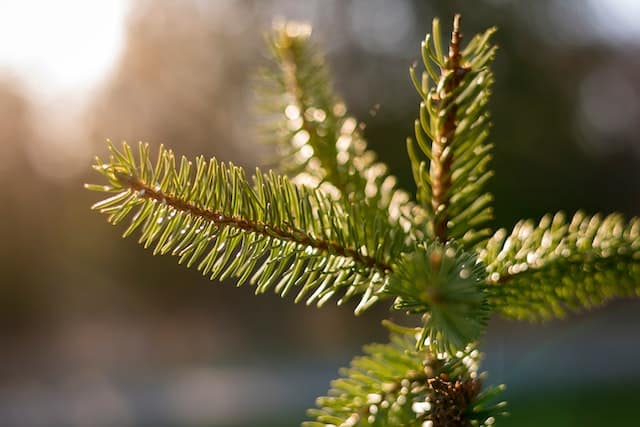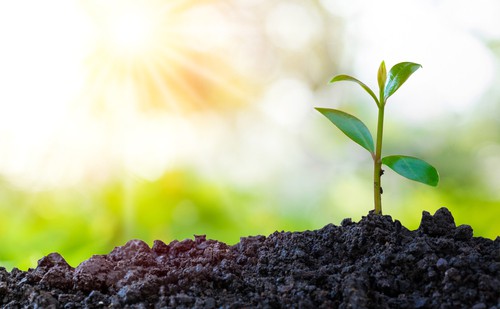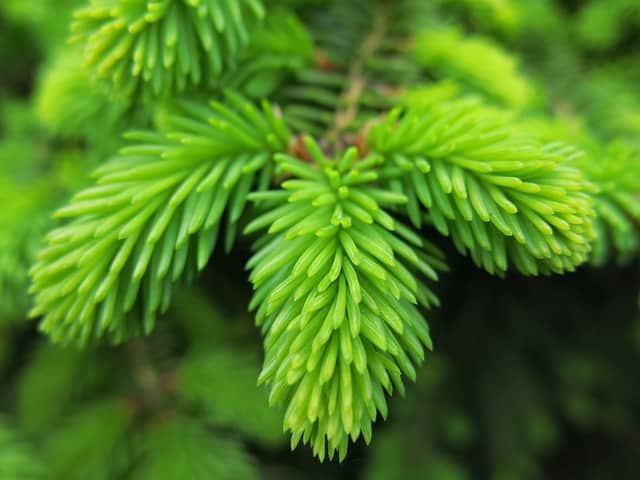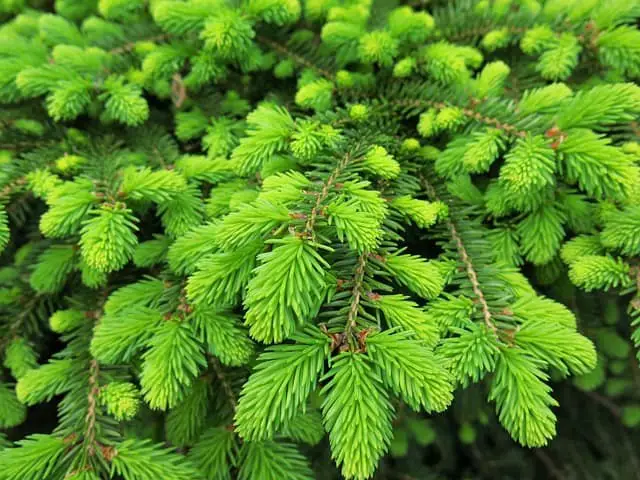Birds Nest Spruce is a popular evergreen shrub that is known for its dense, rounded, and spreading growth habit with mostly horizontal branches. It is an ideal landscape plant that adds texture and color to any garden. However, if you notice that the needles of your Birds Nest Spruce turning brown, it can be a cause for concern.
Browning of the needles in the middle of the plant is a common problem that affects Birds Nest Spruce. While it can be a sign of the plant dying due to lack of water, overwatering can also cause browning of the needles.
As a grower, it is essential to determine the cause of the browning and take appropriate measures to prevent further damage to the plant. In this article, we will discuss the causes of browning in Birds Nest Spruce and how to prevent and treat it.
Key Takeaways on Birds Nest Spruce Turning Brown
- Browning of the needles in Birds Nest Spruce is a common problem that can be caused by both under and overwatering.
- Other causes of browning include fungal infections, insect infestations, and extreme weather conditions.
- Preventive measures such as proper watering, fertilization, and pruning can help keep your Birds Nest Spruce healthy and vibrant. In case of browning, timely treatment can help save the plant.
See these other top posts in this category:
- Bird’s Nest Fern Turning Brown?
- Bird of Paradise Stems Turning Brown:
- Bee Balm Leaves Turning Brown:
Understanding Birds Nest Spruce

Characteristics of Birds Nest Spruce
The bird’s nest spruce, also known as Picea abies ‘Nidiformis,’ is a slow-growing, low-maintenance evergreen shrub that is popular in landscaping. This dwarf Norway spruce has a mature size of around 3 to 4 feet in height and width, making it an ideal choice for smaller gardens, rock gardens, and container planting.
The bird’s nest spruce has a dense, rounded, spreading growth habit with mostly horizontal branches that create a bird’s nest-like appearance. The needles are dark green and grow in a spiral pattern around the branches, giving the plant a unique texture.
Ideal Growing Conditions
Bird’s nest spruce prefers full sun to partial shade and well-draining soil. It is tolerant of a wide range of soil types, including acidic, alkaline, and loamy soils. However, it does not tolerate wet or waterlogged soil, which can lead to root rot and other fungal diseases.
This evergreen shrub is hardy in USDA zones 3 to 8 and can withstand cold temperatures down to -40 degrees Fahrenheit. It is also drought-tolerant once established and does not require frequent watering.
Birds Nest Spruce – 3 Common Problems
Bird’s Nest Spruce is a popular evergreen shrub that is prized for its unique shape and attractive foliage. However, it is common for the needles of this plant to turn brown, which can be a cause for concern for gardeners. The following are some of the common causes of browning in Bird’s Nest Spruce.
Disease and Infestation
One of the main causes of browning in Bird’s Nest Spruce is disease and infestation. Fungal infections like Rhizosphaera needle cast can cause the needles to turn brown and fall off. Spider mites and aphids are common pests that can also cause discoloration and browning of the foliage. Gardeners can use neem oil or other insecticides to control these pests.
Watering Issues
Improper watering is another common cause of browning in Bird’s Nest Spruce. Overwatering can lead to root rot, which can cause the needles to turn yellow and then brown. Underwatering can also cause the needles to turn brown and fall off. Gardeners should ensure that the soil is moist but not wet, and avoid watering the foliage.
Soil and Sunlight Conditions

Bird’s Nest Spruce prefers well-drained soil and partial to full sunlight. Wet soil can lead to root rot, which can cause the needles to turn brown. Hot weather and excessive sun exposure can also cause the foliage to turn brown. Gardeners should ensure that the plant is getting enough sunlight and water, and that the soil is well-drained.
Preventive Measures and Treatment
Proper Planting and Care
Proper planting and care are essential in preventing bird’s nest spruce from turning brown. These shrubs grow best in well-drained soil that is moist but not waterlogged. They tolerate a wide range of soil types but prefer slightly acidic soil with a pH of 5.5 to 6.5. They also thrive in full sun but can tolerate partial shade.
When planting, ensure that the shrub is placed in a hole that is twice as wide as the root ball. Backfill with soil and water thoroughly. Mulch with a layer of organic material such as wood chips or straw to retain moisture and suppress weeds. Avoid planting too deeply as this can cause the base of the trunk to rot.
Regular pruning is also important in maintaining the health of bird’s nest spruce. Prune away any dead or damaged twigs and branches to promote new growth. Use saws or shears to make clean cuts and avoid tearing the bark.
Treatment of Diseases and Pests
Bird’s nest spruce can be susceptible to diseases and pests such as spider mites and voles. Spider mites can cause yellowing and browning of the needles, while voles can damage the roots and bark of the shrub.
To treat spider mites, use a product labeled for spider mite control and follow the instructions carefully. To prevent voles from damaging the shrub, place a wire mesh around the base of the trunk to prevent them from chewing on the bark.
Fertilization can also help prevent browning of bird’s nest spruce. Apply a balanced fertilizer in the spring and fall, following the instructions on the package. Avoid over-fertilizing as this can cause the needles to burn..
Frequently Asked Questions

Is Birds Nest Spruce Drought Tolerant?
Birds Nest Spruce is not drought-tolerant and requires regular watering. It prefers moist, well-drained soil and should not be allowed to dry out. If the plant is exposed to prolonged periods of drought, its fronds may turn brown and fall off.
Birds Nest Spruce is a fast-growing tree that can reach up to 20 feet in height, and it is important to provide it with ample water to support its growth.
Can Birds Nest Spruce Grow in Containers?
Birds Nest Spruce can be grown in containers, but it requires more attention than when grown in the ground. It is important to use a well-draining soil mix and to water the plant regularly.
Container-grown Birds Nest Spruce should be fertilized with a slow-release fertilizer once a year. It is also important to prune the plant regularly to maintain its shape and size.
Is Birds Nest Spruce Low Maintenance?
Birds Nest Spruce is a low-maintenance plant that requires minimal pruning and care. It is a slow-growing plant that does not require frequent fertilization.
However, it is important to keep the soil moist and well-drained to prevent any waterlogging. Birds Nest Spruce is also susceptible to pests like scale, which can be controlled with insecticides.
How do you treat a spruce tree that turns brown?
If a birds nest spruce tree is turning brown, it could be due to overwatering or underwatering. The first step is to check the soil moisture level and adjust watering accordingly. If the soil is too dry, the tree may need more water.
If the soil is too wet, the tree may need less water. It is also important to ensure that the tree is getting the right amount of sunlight. Pruning the affected branches can help the tree recover. If the tree is infected with a disease, it may require treatment with a fungicide or insecticide.
What diseases do birds nest spruce get?
Birds nest spruce trees are susceptible to several diseases, including needle cast, rust, and canker. Needle cast is a fungal disease that causes needles to turn brown and fall off. Rust is a fungal disease that causes orange or yellow spots on needles.
Canker is a fungal disease that causes branches to die back. These diseases can be treated with fungicides.
Where to plant birds nest spruce?
Birds nest spruce trees prefer well-draining soil and full sun to partial shade. They can be planted in a variety of locations, including gardens, landscapes, and container gardens. It is important to ensure that the tree has enough space to grow and that it is not planted too close to other trees or structures.
Do deer eat birds nest spruce?
Deer are known to eat birds nest spruce trees, especially during the winter months when other food sources are scarce. To protect the tree from deer, it may be necessary to install a fence or use deer repellent.
How often do you water a bird’s nest spruce?
Birds nest spruce trees require regular watering, especially during the first few years after planting. The tree should be watered deeply once a week, or more often during hot, dry weather. It is important not to overwater the tree, as this can lead to root rot and other problems.
Birds nest spruce companion plants
Birds nest spruce trees can be planted with a variety of companion plants, including ferns, hostas, and heucheras. These plants complement the tree’s texture and color and can create a beautiful and cohesive landscape design. It is important to choose plants that have similar growing conditions and water requirements.

Hey, I’m Lisa and I’ve been an avid gardener for over 30 years. I love writing, talking and living in the garden! Feel free to connect with me on my socials below

